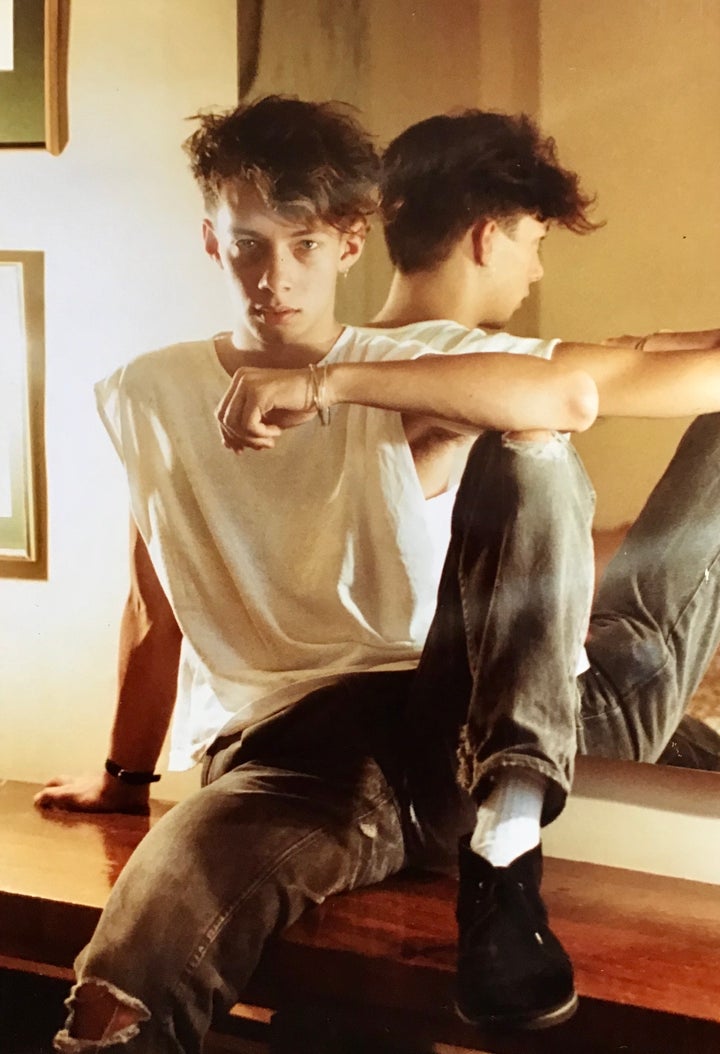I was 15 when I first had sex with a man. I’d snuck off to London’s Heaven nightclub with the express intent of ridding myself of my ‘gay virginity’, a goal I achieved fairly easily with a visiting American photographer.
Later that week, I watched with rising panic the Horizon documentary, A Killer in the Village. It warned of a new disease that was killing gay Americans. At that time, the disease did not have a name. We now know it as AIDS.
The government’s ’Don’t Die of Ignorance’ HIV advertising campaign, featuring icebergs, a tombstone and a doom-laden voiceover, came out a couple of years later when I was in my first year at university. At the same time Section 28, inserted into the Local Government Act in an attempt to ban “the promotion of homosexuality”, started making its way through Parliament. The “gay plague”, as the tabloids dubbed it, was all the justification needed for politicians, journalists and religious leaders to condemn our sick and short lives. Homophobia had gained a powerful weapon.
My love life at the time was complicated and messy, and often fuelled by alcohol and poor judgement. I considered myself to be safe – I almost always used condoms but there were slips and breakages and mornings where I woke up with only hazy memories of the night before. It was chaotic but mainly it was fun.
“Death and grief were bound up in my experience of being young and gay. And it didn’t even feel odd – a community dealing with fear and loss was the only one I knew.”
And then my friends started dying. Death and grief were bound up in my experience of being young and gay. And it didn’t even feel odd – a community dealing with fear and loss was the only one I knew.
It was worse for others. I’m younger than the generation that suffered the greatest loss to AIDS but still old enough to lose count of the friends that I lost. I went to more funerals of my contemporaries in my twenties and thirties than I did in my forties or, so far, in my fifties.
The friends at the heart of It’s A Sin are all about five years older than me, I share many of their experiences. I had their same dreams and desires, and I made their mistakes. I still picture those I lost: wise, twinkly Mick, a member of the Gay Liberation Front and the first person I knew with HIV; Roy, who denied his illness beyond the time when all of his friends knew; Paul with his huge blue eyes and even bigger heart. I think of David who took his own life rather than face lingering death, and I think of Derek, who loved beauty but lost his sight. I think of Ian, always the smartest but kindest man in the room, and of handsome James – and his legendary parties.
It’s daunting at any time to reflect on those terrible days when there was no effective treatment. Perhaps it is particularly difficult now, at a time when disease and death are all around us again. Covid, like HIV is affecting some communities more than others. Within these communities, unresolved grief crashes against new losses.
I know many of my contemporaries have struggled to watch It’s A Sin, the grief still too raw – but I cannot help but view the show through the lens of my own experience. Like Richie, I was a struggling young actor, living in a London flatshare while AIDS dug itself progressively deeper into my life. I recognise the trauma and medical challenges faced by those who received an AIDS diagnosis before there was effective treatment. Many who survived sustained permanent damage and are now living with that. With over 20,000 deaths from AIDS in the UK alone no drama could tell all of our stories – or encompass all of that grief – but I feel it comes close to mirroring my own.

For me, It’s A Sin isn’t a drama about AIDS – it’s a drama about homophobia. The show illustrates how fear, hatred and intolerance of homosexuality, attitudes which were then widely shared across all regions and social classes, combined with a virus to kill people like me and people like my friends. It was AIDS that killed those men, but it was homophobia that allowed it to happen – and that led to so many men dying alone.
I try to honour the legacy of those lost. Without those warriors who willingly trialed experimental drugs we would not have the medication that now saves lives, including my own. Because of those trials we now have PrEP (pre-exposure prophylaxis).
Ending HIV infections within a generation is an ambitious but achievable goal. Effective treatment prevents transmission. PrEP can keep you free from HIV. But we still need to dismantle the barriers to testing, prevention and treatment that the stigmatisation of people living with HIV creates.
An HIV diagnosis is no longer a death sentence – we need to share the good news that a treatment will prevent AIDS. We must challenge fear by ensuring that everyone knows effective treatment means that we can’t pass HIV on to our sexual partners. Just as we fought for greater acceptance of LGBT people, we now must fight to end HIV stigma if we are to end this epidemic.
I can think of no better way of honouring those who died.
Matthew Hodson is the Executive Director of aidsmap, a charity providing information about HIV and AIDS. Follow him on Twitter at @matthew_hodson
Have a compelling personal story you want to tell? Find out what we’re looking for here, and pitch us on ukpersonal@huffpost.com

